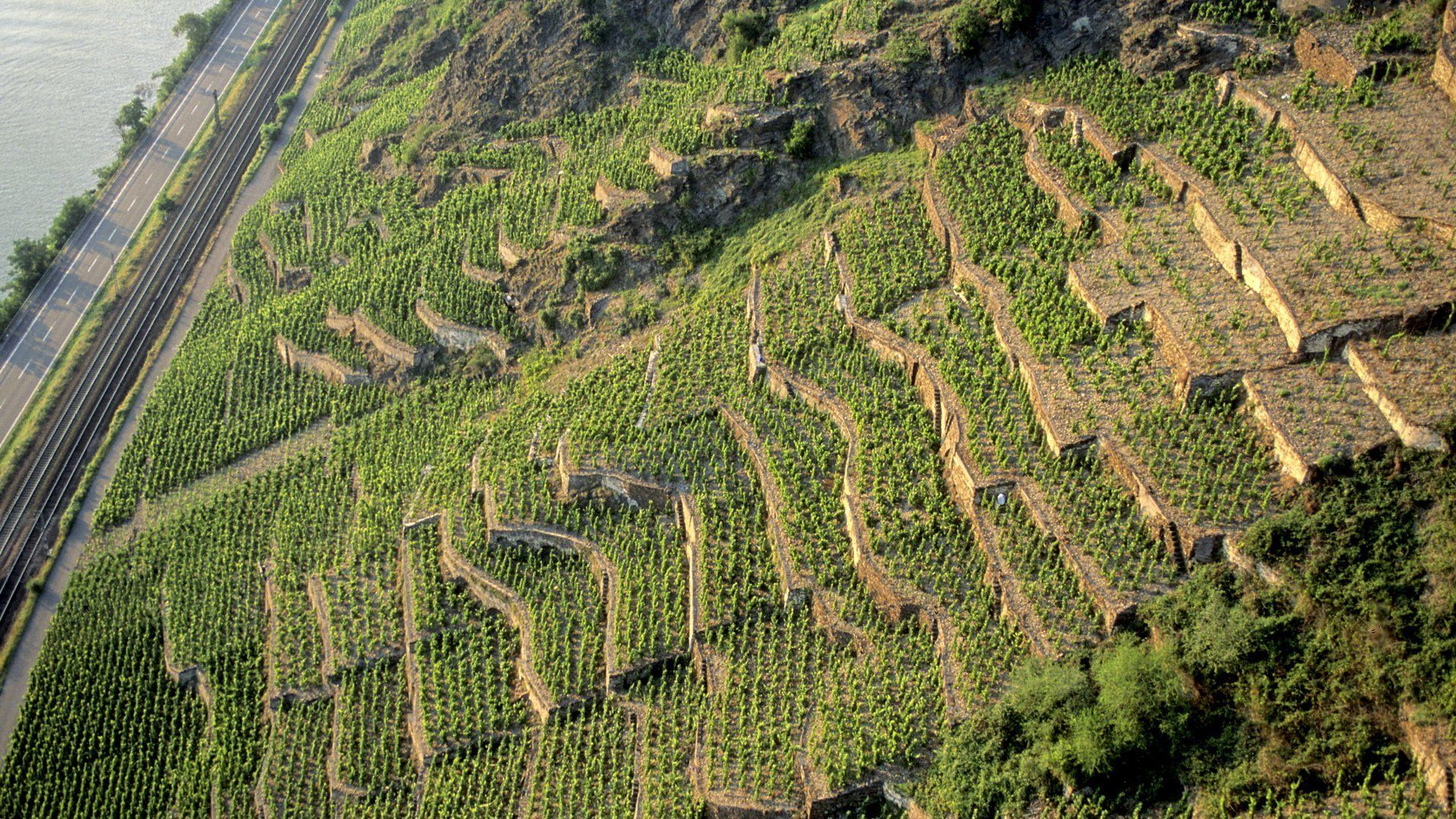Facts
Geological definition: Devonian, Rittersturz hillside layers. Blue slate, whose iron content oxidizes so quickly upon contact with the air that the surface gives the primary impression of a yellow-brown coloration. In some especially exposed places, the heat of the sun even cooks the petroleum (which started as plankton) right out of the slate, which then lays like a blue shimmer across the hillside.
We cultivate four parcels here, totaling 2.1 ha. Orientation: Southeast, elevation 80 - 180 m, slope 100 to 170%, average age of vines: over 60 years, with a significant portion ungrafted. Classification: VDP.GROSSE LAGE.
The wine is exclusively vinified with wild yeasts in wooden barrels and absolutely no addition of enzymes or fining agents, and ages at least until summer of the year following harvest on the lees. Röttgen wines are produced dry and bear the designation of VDP.GROSSES GEWÄCHS. In notable years this is also the cradle to high-quality residually sweet Auslesen, Beerenauslesen and Trockenbeerenauslesen.
























